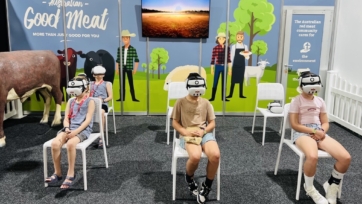How to lean in to change: Thriving in the education sector
Written by Sadichya Pradhan

Riding the influencer wave: How to get your resources into the hands of Aussie teachers.
Things change quickly in the education sector. So, how do you develop a school program that makes an impact and creates long-lasting connections with students and teachers? Today, we’ll walk you through some changes that have occurred in recent years, the challenges our clients are facing as a result, and how to solve them.
Let’s start from the year 2020.
The global pandemic that hit us in 2020 caused major disruptions in education when it forced 1.5 billion of the student population across 165 countries to abandon the classroom and stay at home. COVID restrictions were imposed to keep people within the four walls of their home, but it somehow inspired them to think outside of the box. Do you see the irony here? Notion of eDTech has been around for years but the rate at which schools were incorporating technology into the education system was rather slow until the sudden arrival of COVID-19. Schools and teachers were forced to depend on technology to connect with students, leading to more innovations and advancement in the eDTech sector.
Take virtual classrooms for example. During Covid, many of our clients that used to host school excursions or incursions were finding it challenging to create a school program that provided students with similar real-life learning experiences. Introducing virtual classrooms where experts from the real world (such as a farmer) engage with students and virtually take them through their particular work, proved to be a game-changer. Students have really engaged with this kind of direct, interactive content and the growing numbers have shown that there’s a real appetite for virtual classrooms or virtual excursions, even post-pandemic.
The second challenge is to understand that despite the digital advancement during COVID, there are many schools across Australia, mainly in the rural states, where the digital transition and adoption of technology hasn’t been easy. For schools with less resources and digital equipment, the shift to remote-learning was a hard task to accomplish. This suggests that following a one-size-fits-all strategy for developing school programs will lead us nowhere. Rules across the states and territories vary greatly, for example, some won’t allow access to video sharing platforms such as YouTube. Some schools may encourage interactive technology, others may be limited by factors such as bandwidth or school policy on what they can use. This is where Kimberlin Education comes in. We’re in touch with schools across all states and have digital experts keeping abreast of trends and innovations.
Cut to 2022.
The Australian Curriculum was reviewed and updated with key changes, setting higher standards for education across Australia through Version 9.0. But what do these changes mean for you? According to the teacher survey conducted by Kimberlin Education, teachers are more likely to use learning resources or sign up for a school program if it meets the requirements of the curriculum. Our clients often find it challenging to get their message across to the education community while adhering to the curriculum standards. Kimberlin Education’s education managers are curriculum experts. They can take your message, link it to the curriculum and work closely with you to deliver an engaging resource for students.
Changes are inevitable but with the right approach, you might just turn them into opportunities that can get you closer to reaching your objective: making a real impact in the classroom.
Next Steps?
Need help developing resources that inspire teachers and students? Contact Kimberlin Education and let us develop resources made for teachers, by teachers.




